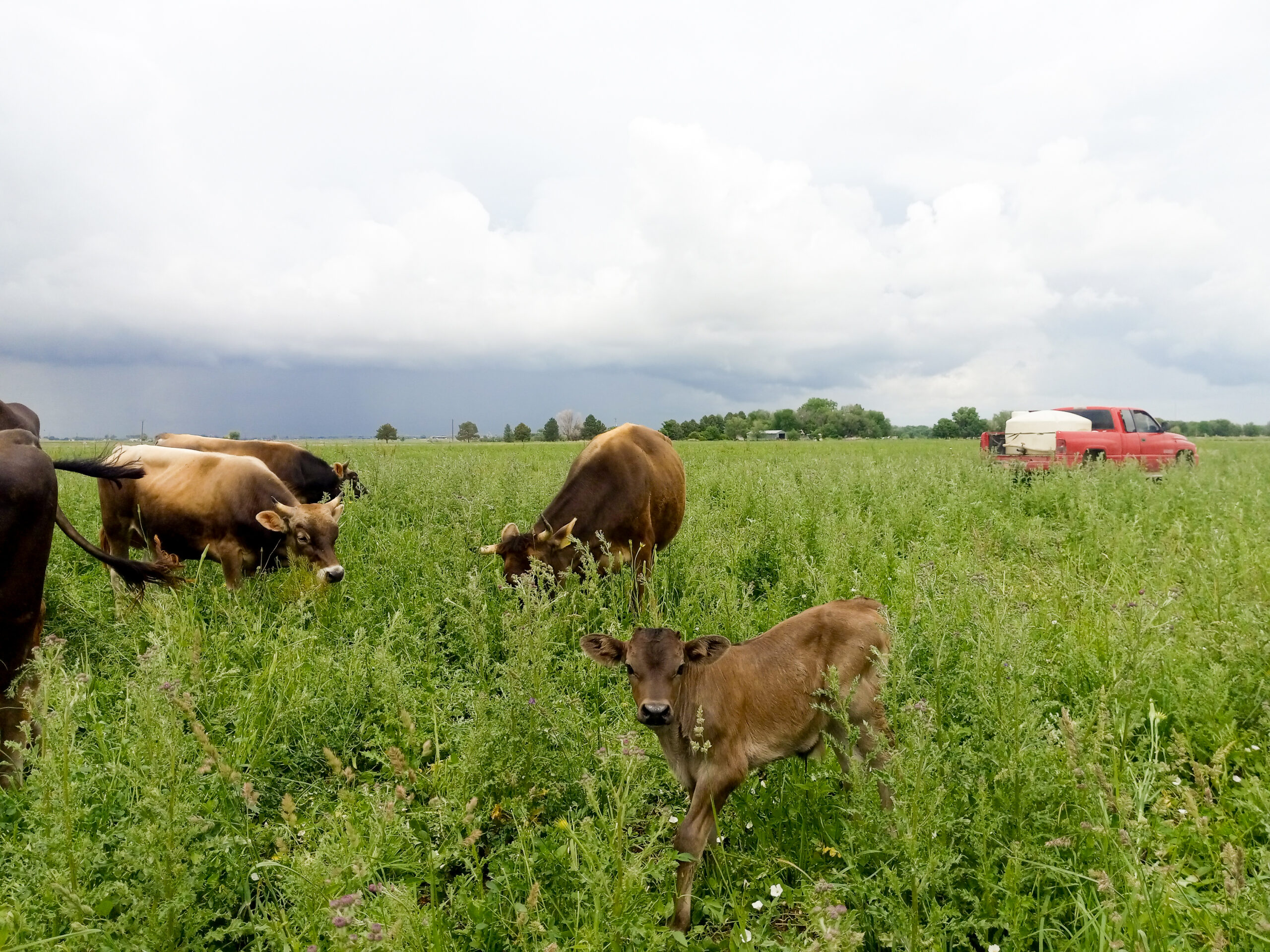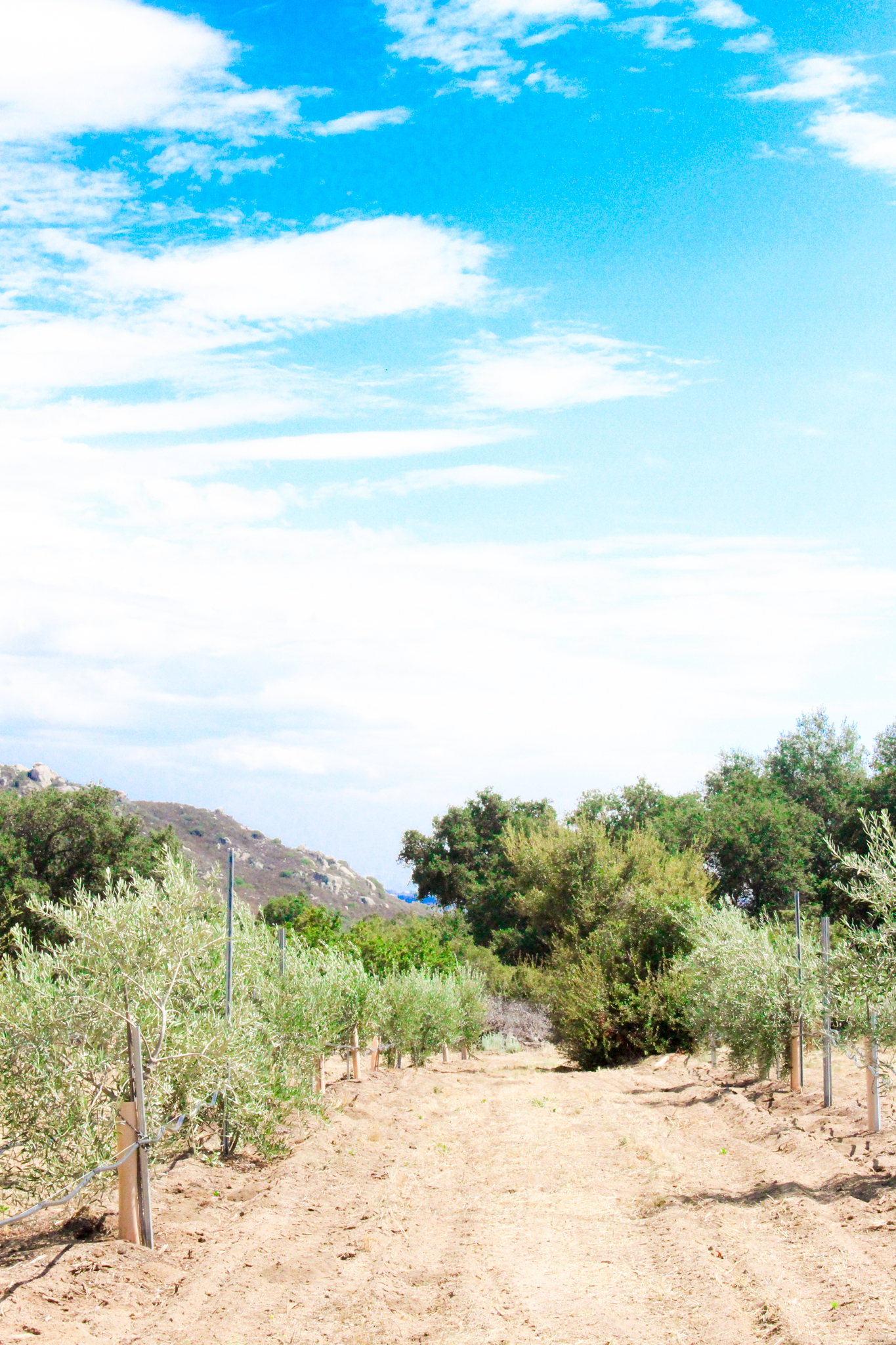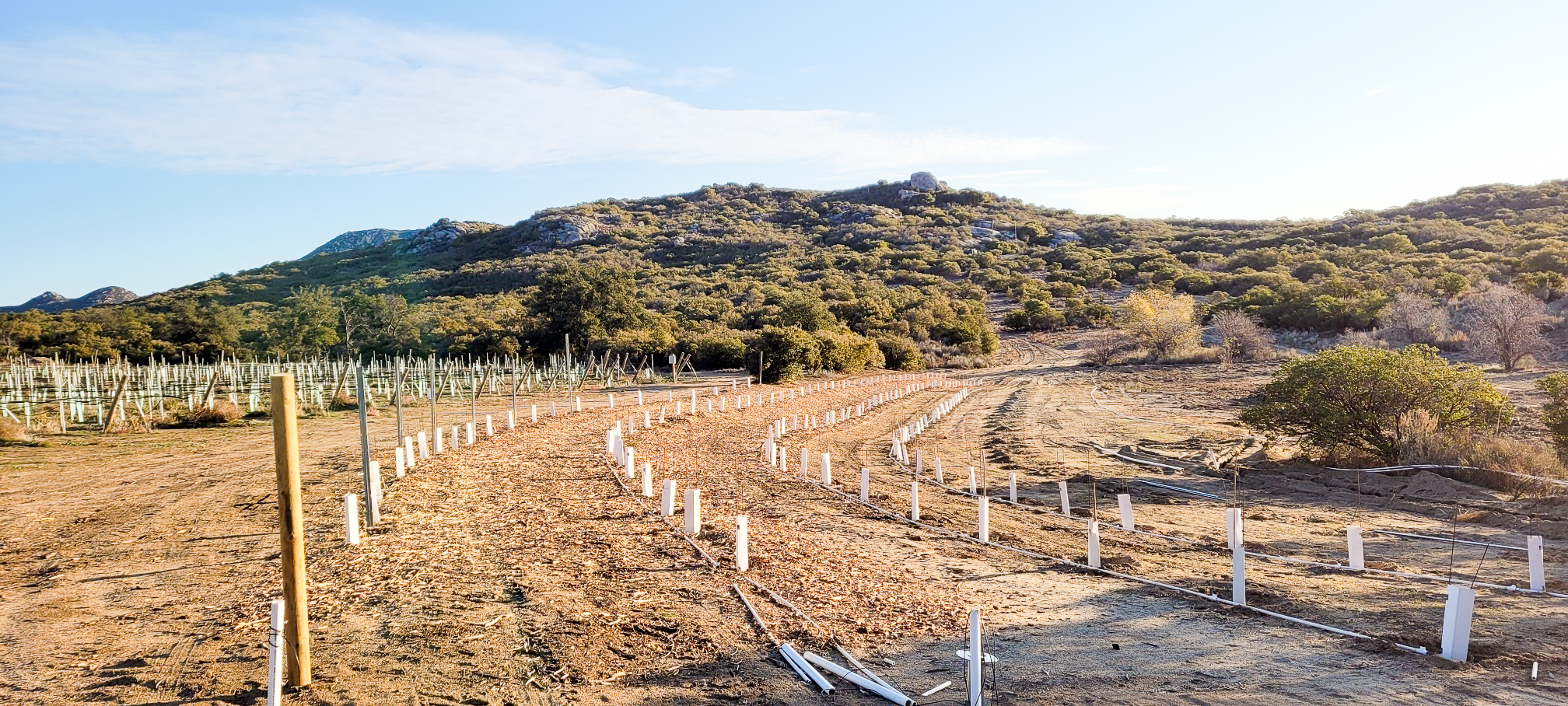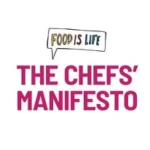Zero Foodprint teams up with people and businesses across the food system to fund regenerative farming practices that build healthy soil and sequester carbon.
With the help of our member businesses and individual donors, we provide grants to farmers and ranchers to get that next regenerative practice on the next acre. Learn about the recipient farms below.
Hummingbird Agrotek
County: San Diego, CA
Primary Crops: Olives, wine grapes, berries, stone fruit, agaves, prickly pears
CO2e Sequestered: 475 tons (from practices implemented form 2 grant awards)
Practices Implemented: Compost Application Perennial Crop, Cover Crop, Hedgerow Planting, Windbreak/Shelterbelt Establishment
Less than ten miles from the Mexican border in southern California, an oasis named Hummingbird Agrotek thrives. Ofelia and Eric, both former agronomists, transformed a once-trash-ridden land into a vibrant farm filled with nectarine, peach, plum, apricot, apple, fig, olive, and pomegranate orchards, along with a vineyard.
Their deep connection to the environment and community led them to secure grants that enabled them to implement regenerative practices like planting cover crops and applying compost. Powered by solar energy and driven by a desire to promote soil health and sustainability, their next endeavor involves cultivating agave for various uses.
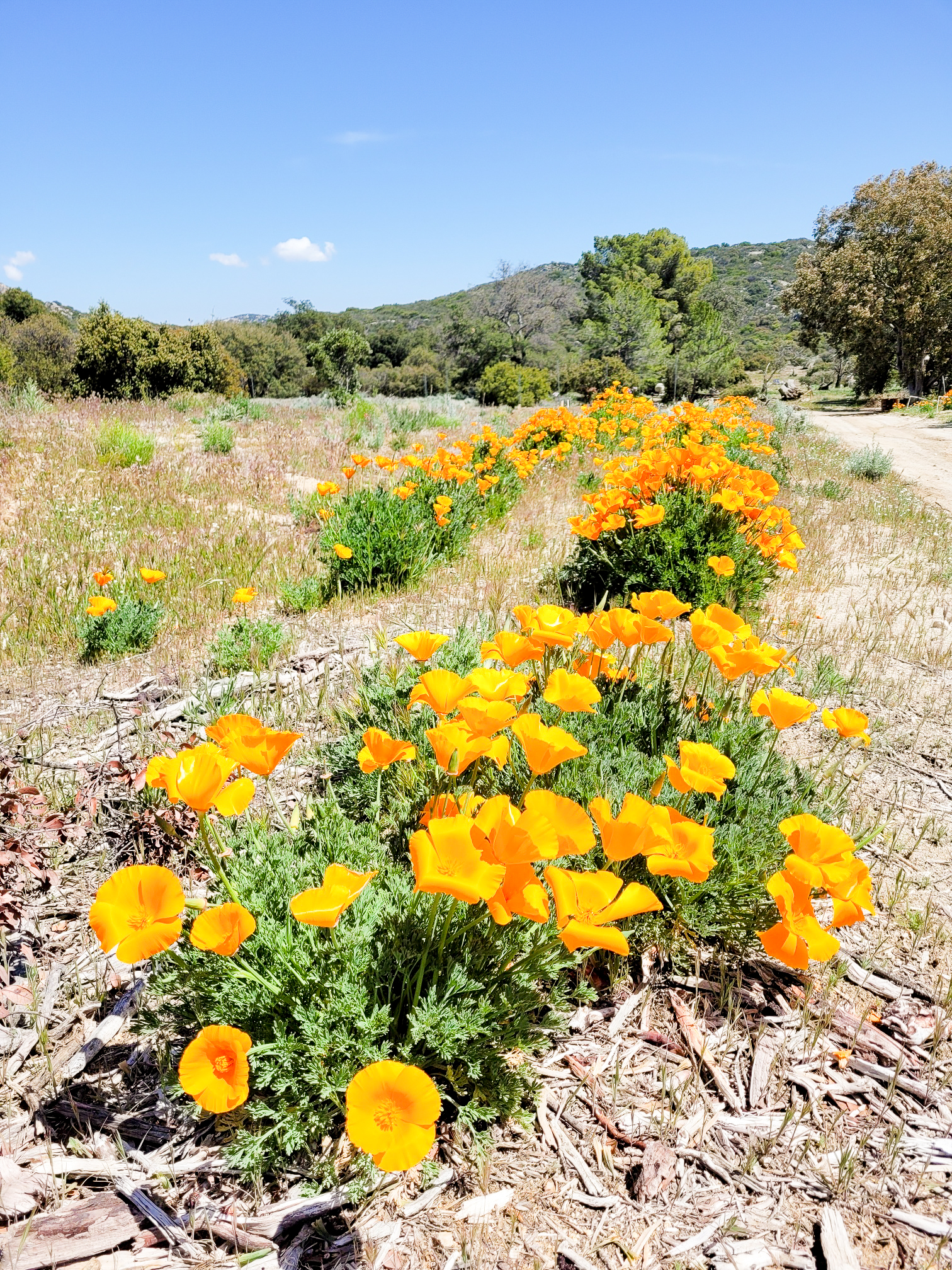
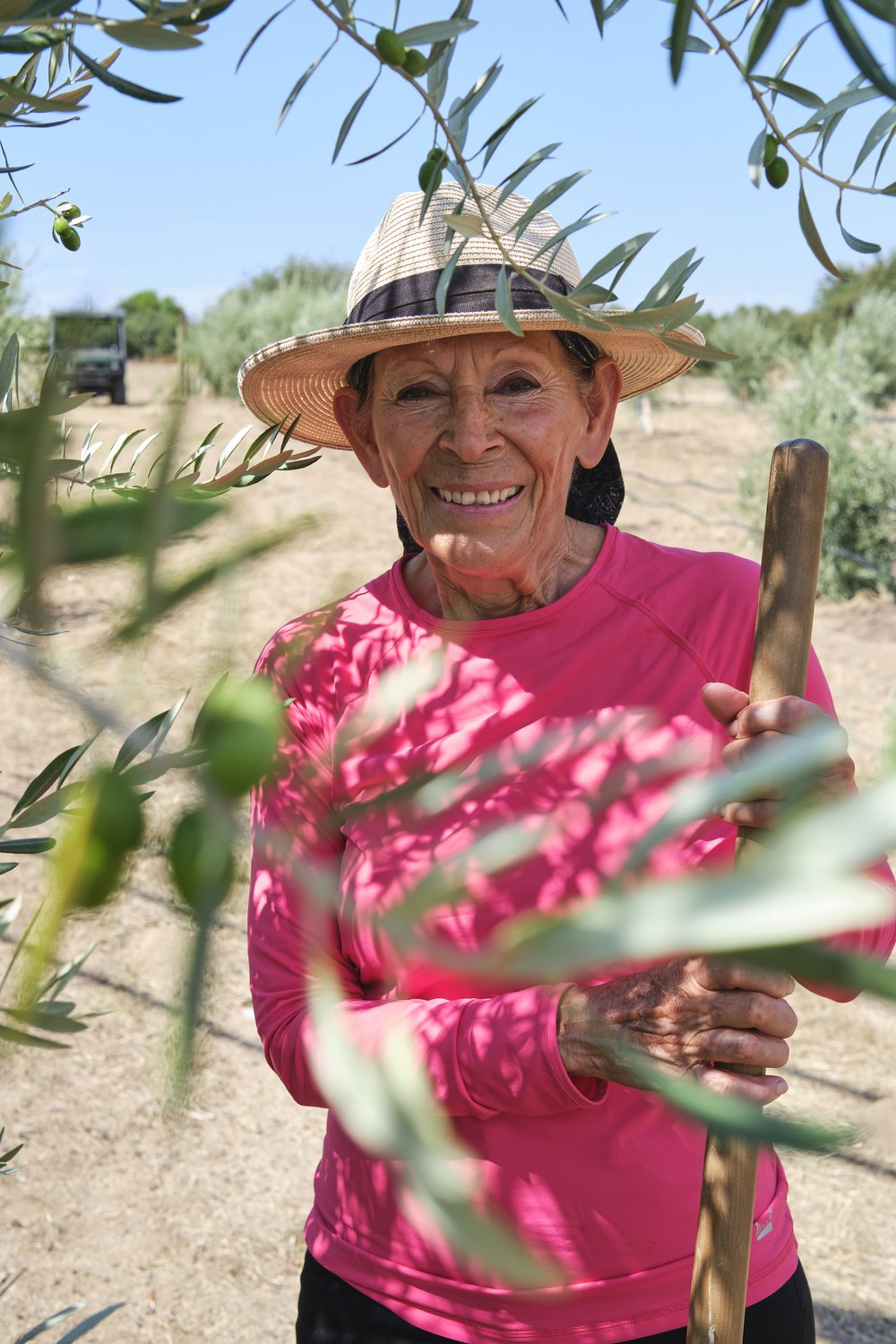
What are your biodiversity goals from practices implemented from ZFP Restore Grant?
“This grant will help us to establish hedgerows, shelter belts (wind brakers-Carbon and Nitrogen sequesters), Swiss Sandwich, and pollinator habitats throughout our farm. Hedgerows provide shelter and food for a variety of wildlife, fostering biodiversity, pest control, and pollination; while the Swiss Sandwich System can be beneficial not only to control weeds, but also as an insectary that host beneficial insects as well as a pollinator habitat. By creating spaces to attracts pollinators, we support plant reproduction and the wider ecosystem.”
-Ofelia at Hummingbird Agrotek
“I don’t know how to tell you how grateful we are! A normal farmer cannot have the money to get compost, especially, and we are so far from everything that, as you know, most of the cost of compost is in the delivery! It’s absolutely expensive, and farmers like us can’t afford to pay for all that. What you’re doing with Zero Foodprint grants and Compost Connector is my dream come true!”
-Ofelia at Hummingbird Agrotek
Wild Wellspring Farm
County: Boulder, CO
Practice Acres: 5 Acres
CO2e Sequestered: 150 tons
Practices Implemented: Windbreak/Shelterbelt Establishment, Field Border, Critical Area Planting
How will your ZFP Restore grant award help you feed and protect local wildlife?
“Wild Wellspring will plant over 500 trees to act as a windbreak to protect the vegetable growing area. The windbreak will be a mix of conifers, hardwood and nitrogen fixing trees, with an understory of perennial grasses and clover with native wildflowers, all designed to store carbon in the soil and feed the local pollinators. The windbreak and fence will also protect the growing area from the local elk herd, that have wandered these lands for generations, finding a way for both communities of elk and humans to thrive, along with the additional habitats for birds and pollinators.”
-Wild Wellspring Farm
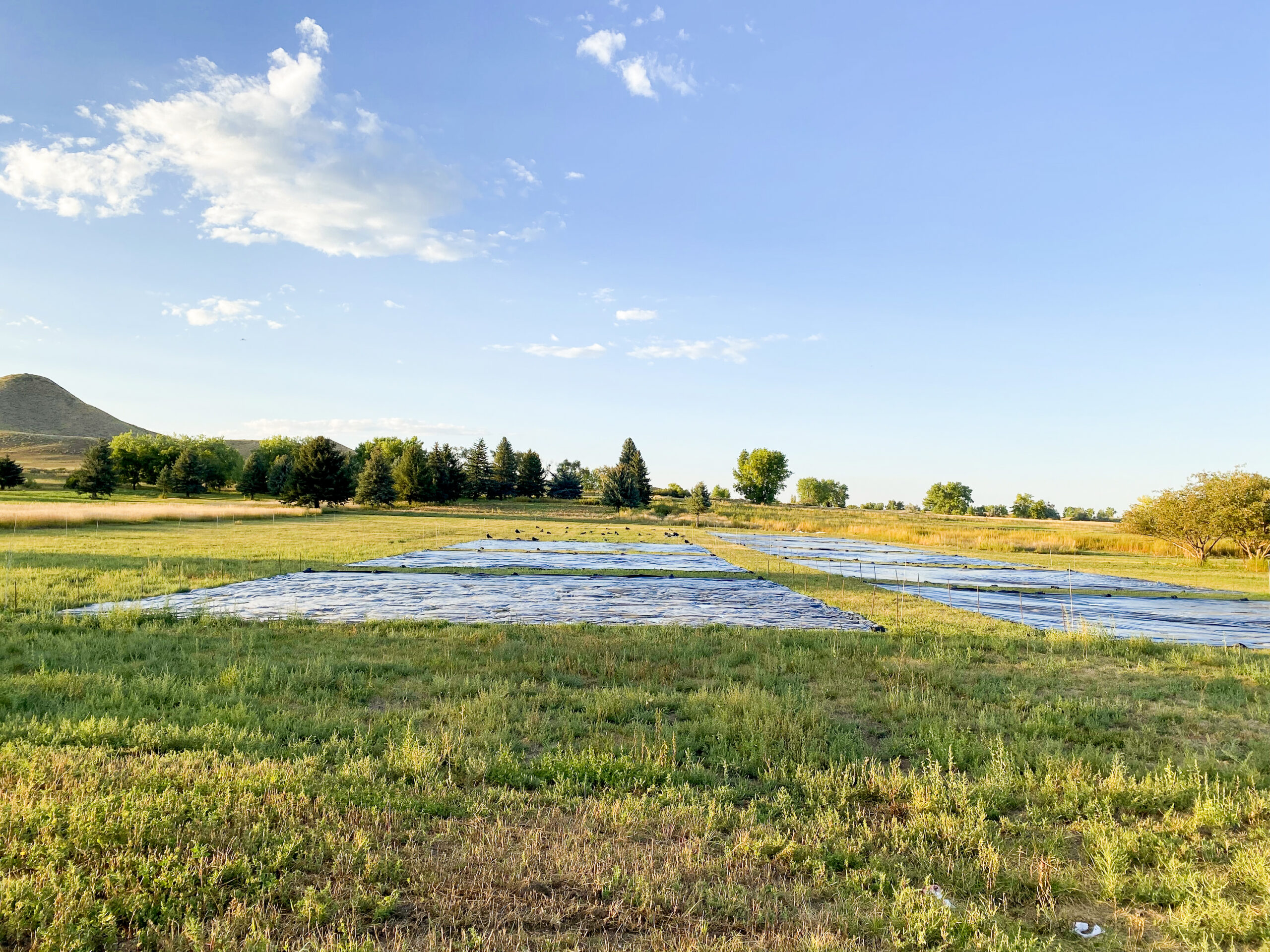
“It is amazing to be able to invest resources into planting trees and pollinator habitats that will protect the farm and bring a greater benefit, that I never would be able to afford or invest in without this support.”
-Wild Wellspring Farm
Large Vista Ranch
County: Pueblo, CO
Primary Crops: Milk, Pork, Vegetables
Practice Acres: 4 Acres
CO2e Sequestered: 840 tons
Practices Implemented: Windbreak/Shelterbelt Establishment, Tree/Shrub Establishment
How will your ZFP grant benefit local native wildlife?
“Wildlife, especially native birds and insects, will benefit immensely from having a food source that they otherwise may not have for miles, as the surrounding fields of conventionally managed row crops lay barren during the winter and spring months.
Windbreaks/shelterbelts would also help to keep the water from the overhead irrigation system from drifting away to these surrounding conventionally managed properties where it quickly evaporates on bare soil.”
